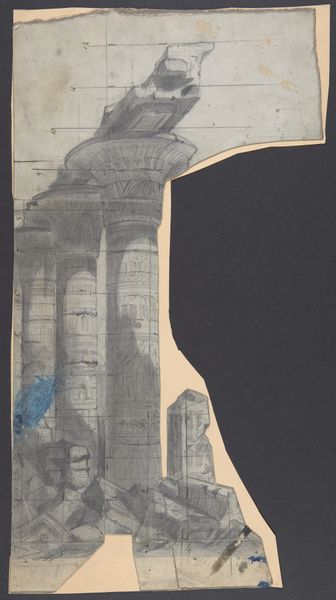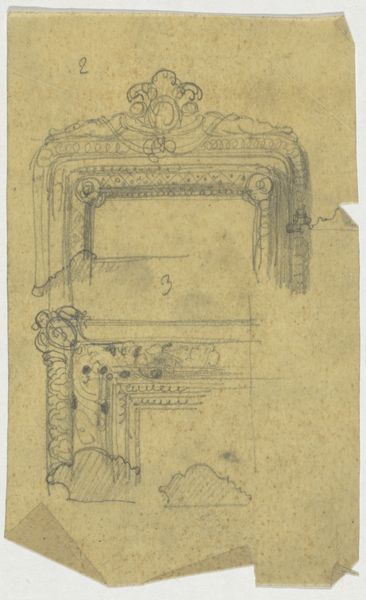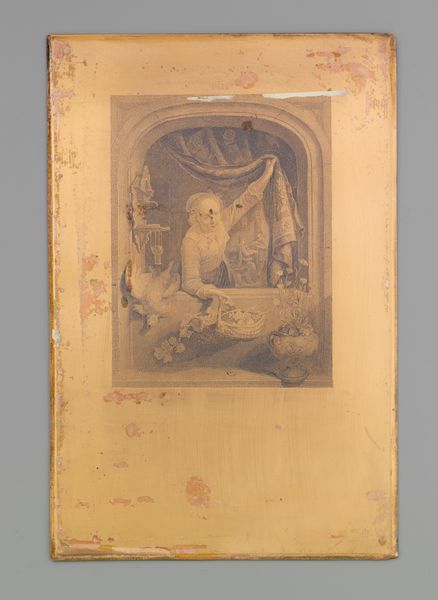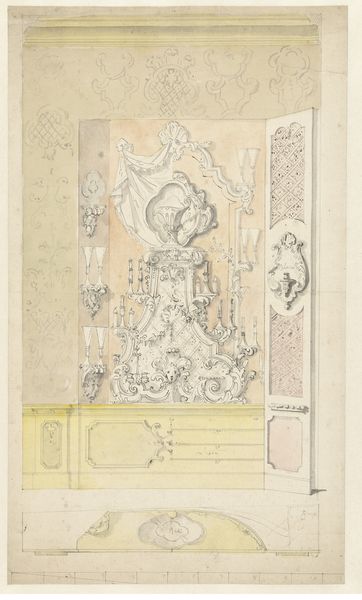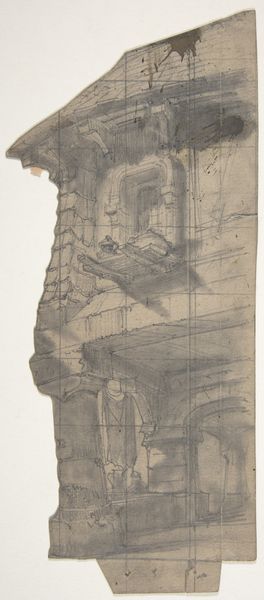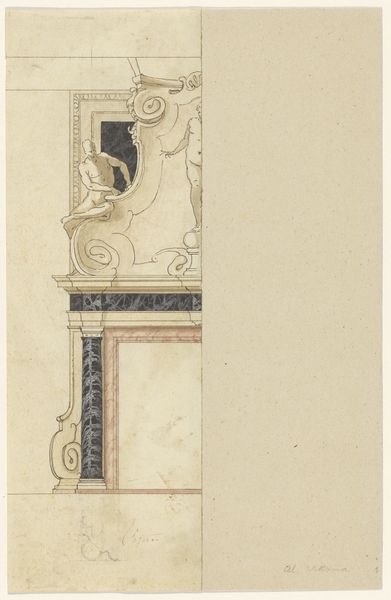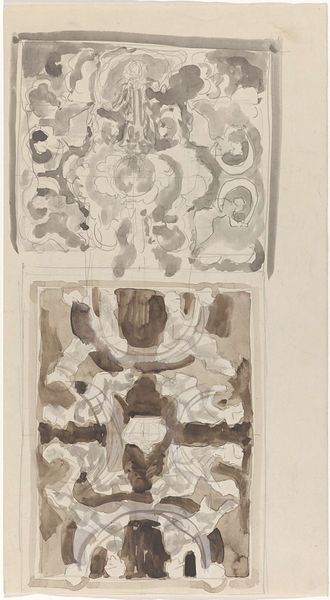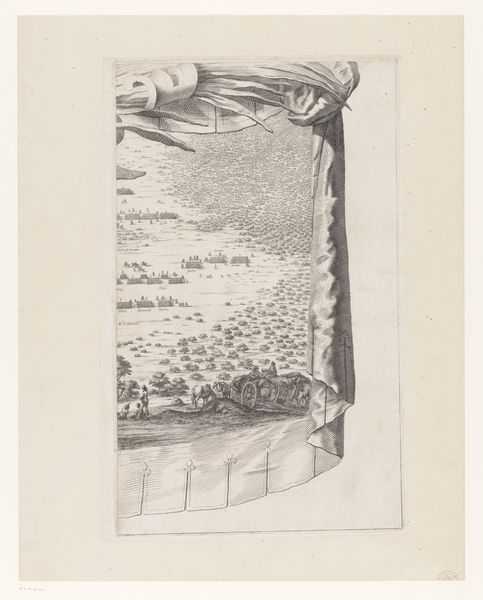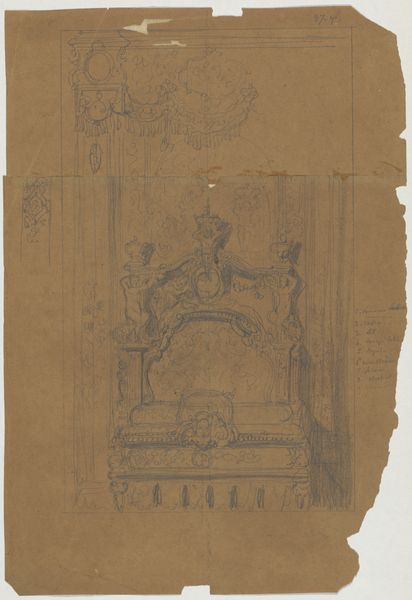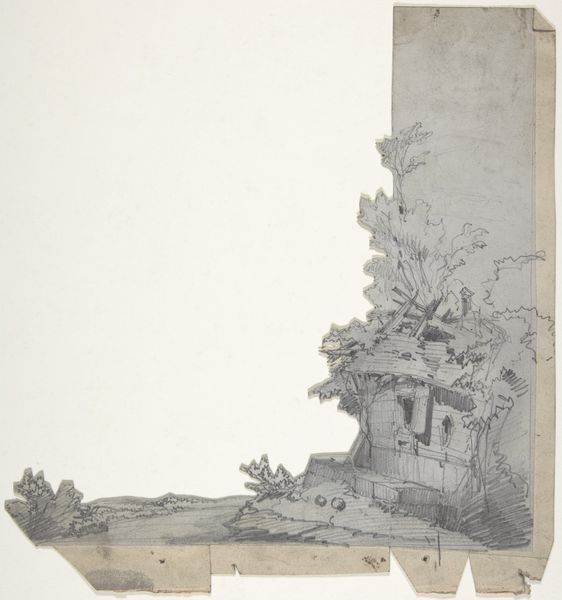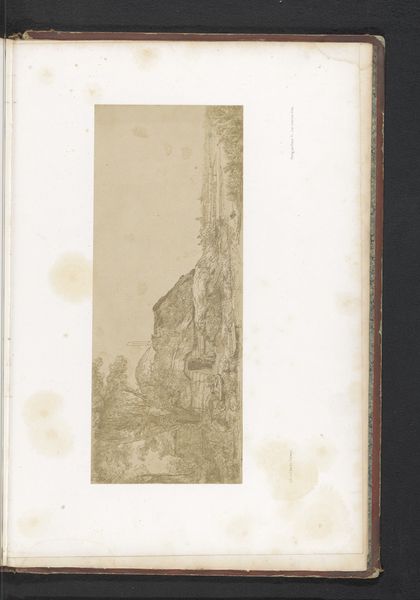
Design for a Stage Set at the Opéra, Paris 1828 - 1890
0:00
0:00
Dimensions: Irregular sheet: 12 3/16 x 11 5/8 in. (31 x 29.5 cm)
Copyright: Public Domain
This is Eugène Cicéri's design for a stage set at the Opéra, Paris. Note the elaborate drapery, ubiquitous in theatrical and royal settings, which descends like a proscenium arch to frame the stage. These curtains are visual metaphors for the unveiling of truth and illusion, drawing on the collective memory of classical antiquity, where curtains separated the sacred from the profane. The motif is reminiscent of ancient Roman theaters, where similar drapery signified the opening of a dramatic spectacle. Consider, too, how draped fabrics appear in Renaissance paintings to denote status, as well as the theatrical Baroque period that followed. The motif’s reappearance in 19th-century opera sets underscores its enduring psychological power, conjuring the emotional intensity associated with dramatic performances. The symbol continues its cyclical journey, resurfacing in contemporary art and performance, constantly evolving in meaning.
Comments
No comments
Be the first to comment and join the conversation on the ultimate creative platform.
